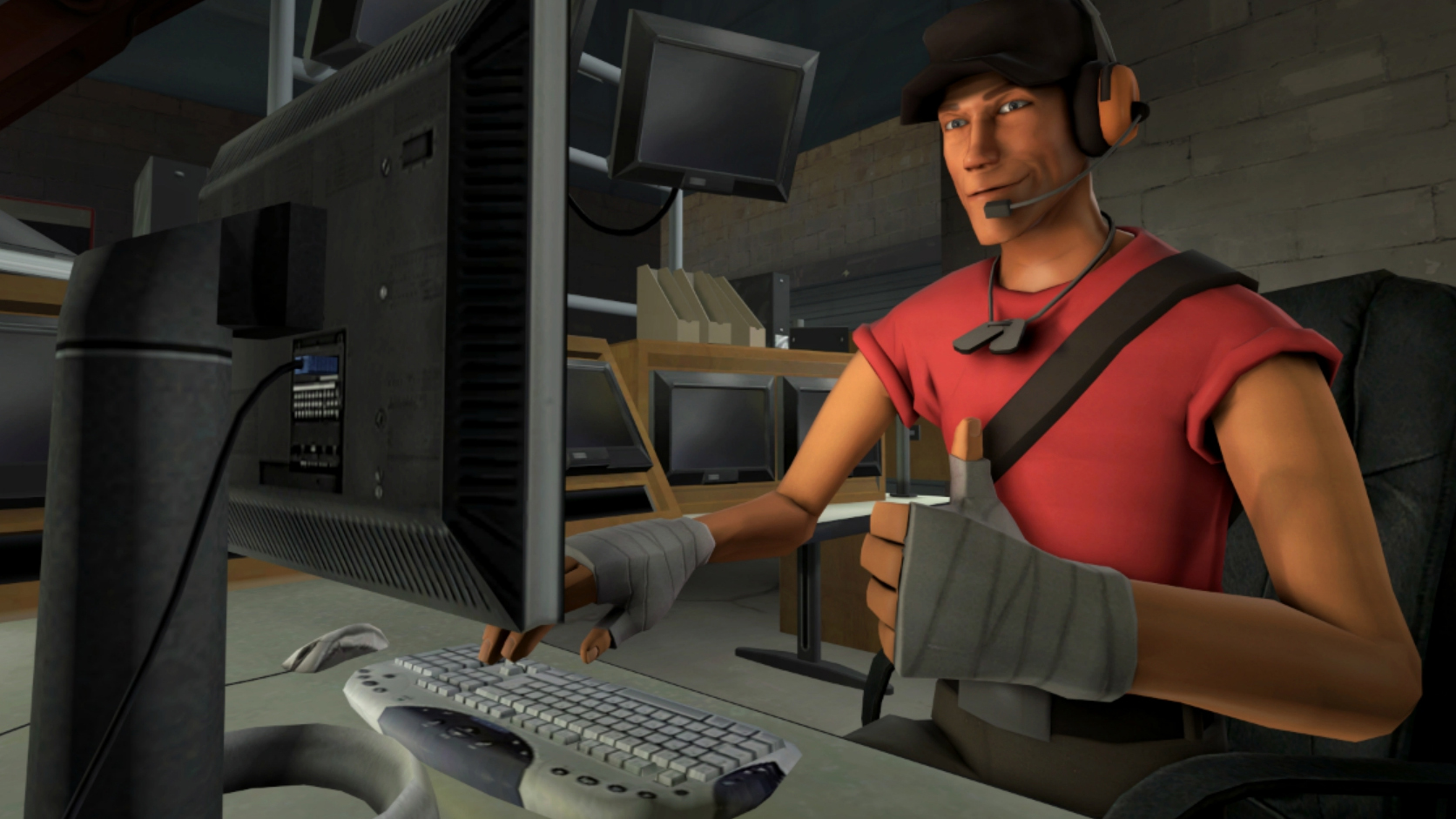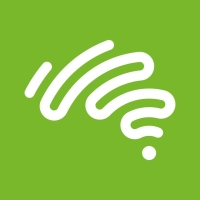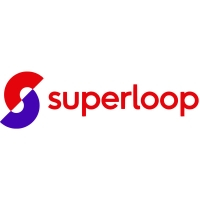The best NBN plans for gaming in 2025
The fastest download speeds, the most generous data caps: these are the best on offer in Australia.

Australia doesn't have the best track record when it comes to bolstering its internet infrastructure, but with the National Broadband Network (NBN) rollout now officially 'complete' and with major upgrades scheduled in 2025, chances are good that you've now got access to some kind of wired fibre connection at home... and you've likely found that you're spoiled for choice when it comes to the amount of plans available.
If you're an online gamer, picking a good NBN plan and ISP can be even tougher, as it can be difficult to know exactly what to look for to have an optimal gaming experience.
Below, we've compiled four editorial picks for the current best NBN providers and plans for gamers. You'll also find price-comparisons for high-speed NBN plans across all relevant plan tiers in case you'd rather shop around more broadly. And below all of that, you'll find a detailed FAQ about the main things gamers need to consider when choosing an ISP to support their hobby, from ping time to download speeds and the various NBN connection types on offer.
If you're currently on an inferior FTTN connection (see our FAQ below), NBN Co has announced "new upgrade paths" for FTTN customers in 2025. In other words, it's expected that 95 per cent of Australians will use FTTP by the end of 2025. In other words, it's possible the landscape might change throughout the year, especially for FTTN users.
The best NBN plans for PC gaming
Best NBN 100 plans for gaming
PC Gamer's got your back
What follows are the NBN 100 plans offered by providers best suited to gamers. While listed alphabetically, the providers themselves are basically neck-and-neck when it comes to their reputation for gamer-friendly internet connections, but as always, your personal experience may vary, in which case: hop around! We'll only ever recommend plans that have unlimited downloads.
Aussie Broadband | NBN 100 | AU$95p/m with no lock-in contract
Aussie Broadband arguably has the best reputation among Australian gamers, and the provider is careful to cultivate that prestige: It delivers some big talk about its gamer-friendly prowess. As a result, this NBN 100 plan hits a good sweet spot when it comes to price and reputation.
Of special interest is its transparency around ping times, which is the single-most important consideration for competitive gamers. You can check out their current ping times here.
Making things more attractive is their ranking in Steam's "performance by internet service provider" info sheet. Aussie Broadband used to be the top here (nowadays Superloop wins) but its 65 Mbps average is still heads and shoulders above most of the competition. is currently beating the competition by a country mile, with a 61.2 Mbps average download rate at the time of writing (For reference, Superloop is 69.4 Mbps.) Of course, none of this affects ping, but it does mean you'll spend less time downloading games and patches.
Exetel | NBN 100 | AU$68.99p/m with no lock-in contract (AU$84.99p/m after 6 month introductory offer)
As far as download speeds go, Exetel is a great contender, promising the full 100Mbps even during peak hours. That effectively means this plan is what's known as 'congestion free' – so you should be able download games and updates as quickly as possible at any hour of the day.
While that doesn't mean much for real time competitive gaming performance, Exetel's not exactly mucking around in that department either: when it comes to ping time it suffers an average of 11.2ms latency during peak hours, according to details from the ACCC's broadband performance report. For reference, Superloop is currently the best, at a truly hectic 9.8ms during peak hours. Latency has dropped across the board over the last 12 months in Australia, so while competing ISPs used to suffer latencies during peak time of up to 22.6ms, nowadays 13.7ms is the highest (Vodaphone).
Exetel also offers a Speed Boost service, which lets users enjoy the next speed tier (in this case NBN 250) for five days per month, with no extra charge.
Superloop | NBN 100 | AU$75p/m with no lock-in contract (AU$89 after 6 month introductory offer)
According to the ACCC's broadband performance report, Superloop is currently the very best low-latency provider, with a low ping rate of 9.8ms during peak hours. That's enough to recommend it to competitive gamers, but it's also reasonably competitively priced.
Superloop also offers a Speed Boost service, which lets FTTP and HFC customers to boost their connection to the next speed tier (in this case, NBN 250) for five days per month. A good thing to keep under your sleeve if you know a ridiculous 100GB Warzone 2 update is imminent.
It also ranks best in Steam's ISP average download rate chart, with speeds of 69.4Mbps (the second runner and former best, Aussie Broadband, is 65 Mbps).
Note that this plan costed less earlier this year: it used to be AU$65 for the first six months.
Want faster download speeds? Here's the best NBN 250 plan
Superloop | NBN 250 | AU$85p/m with no lock-in contract (AU$99p/m after 6 month introductory offer)
When we talk of the best NBN plans for gamers, low-latency connections are usually more important than download speeds. Sure, higher download speeds will tackle game downloads and updates quicker, but it won't make a difference in multiplayer games. For that, an NBN 100—even an NBN 50—plan will do.
All that said, Superloop's NBN 250 deal is currently a winner: in addition to advertised peak hour download speeds of 230Mbps, you're getting the other gamer-friendly perks, including the best current ping rate of 8.3ms during peak hours. They also have a Speed Boost service, which grants you five days of a month to upgrade—free of charge—to the next tier, that being NBN 1000.
What follows below is a list of all the best current prices for NBN plans, across the three fastest speed tiers (NBN 100, 250 and 1000), from over 30 major Australian providers. These rankings don't take into account the gamer-oriented perks of the previously listed ISPs, but may come in handy if you're looking for more competitive prices and don't mind losing a few ms in the ping department.
NBN 1000 plans
NBN 250 plans
NBN 100 plans
FAQ
The best ISPs for gaming in Australia
Select Australian ISPs, including Aussie Broadband, sell themselves on having specific 'gaming' optimisations to their networking infrastructure and setup that can help lower pings. While the factors we've discussed below are still applicable on these ISPs, community feedback from gamers on these providers is generally positive – and as they're making specific claims about gaming speed, they should be more receptive to support requests in the instance you do have issues with ping for a specific game.
Telstra offers a Game Optimisation service, which uses the same DumaOS technology used in some gaming routers such as this one. This technology basically prioritises traffic to your gaming PC or consoles "to help curb lag spikes" and more. This service adds an addition AU$10 to your internet bill with Telstra, with the first month free, and requires you to have Telstra's own Smart Modem. We haven't tested this service ourselves, so can't vouch for its quality. If you have a gaming router with DumaOS, you probably don't need this service.
Also of note are Exetel and Superloop, both of which currently offer the best low-latency NBN connections, as per the ACCC.
Ping speed and gaming
For gamers who play a lot of online multiplayer, ping time is arguably the most important factor to consider. Ping speed is partially in the hands of your ISP, as it's possible for carriers to choose to optimise and route gaming traffic so that it's prioritised above other types – however, many influences on ping are completely outside your ISP's control, such as the type of NBN connection you're on and your home network setup.
When it comes to connection type, fibre to the premises (FTTP) tech is almost always going to offer the fastest pings because it's an end-to-end optical connection between you and your ISP – there's no 'legacy' technology involved that can slow things down. By comparison, fibre to the node (FTTN) and hybrid fibre-coax (HFC) use copper phone lines and coaxial cabling, respectively, which are inherently less responsive than optical fibre. If you're situated only a short distance from the local phone/internet exchange, being on a legacy connection tech might not have much of an effect, but if you live further away, or there's physical degradation to the lines, this might impact ping.
All of this means it's almost impossible to find out about ISP ping times prior to being connected – although opting for an ISP that specifically highlights its gaming chops should put you on a good first footing. (More on this below.)
Download speeds and gaming
Download speed is also another important, albeit secondary, concern for gamers.
On a wired NBN plan, all Aussie gamers should have a choice of either NBN 25, 50 or 100, and in some cases a newer NBN 250 or 1000 plan. The numbers here mark the highest possible speed in Mbps (megabytes per second) you'll get on those plans. For example: NBN 1000 will download at 1Gbps per second (about 125MB/s) at its best, but you'll almost never get that consistently.
You may also find that dropping during peak times, and most ISPs claim peak speeds in the mid to high 40s. Meanwhile, NBN 100 plans offer a maximum of 100Mbps, which means at best, that 130GB download will take about 3 hours (though remember: getting maximum speeds with NBN tends to be rare). It's worth noting that the NBN tier you opt for shouldn't affect your pings, only your maximum download speeds.
All providers listed below provide a "typical evening speed" because that's when you'll likely experience the worst speeds on your plan. A lot of NBN 1000 providers advertise a 250 Mbps evening speed, which is dramatically beneath 1000, although in reality you should experience speeds dramatically faster than this: we polled some NBN 1000 users for this story and in their own testing speeds were almost always above 800 Mbps, even during peak hours.
Meanwhile, typical evening speeds on an NBN 250 plan can vary between 150 and 200 Mbps, depending on your ISP. It's good to pay attention to these when picking a plan: if consistent speeds are important, try to prioritise providers that can keep their download speeds as close to peak speeds during evening hours.
Regardless of the NBN speed you opt for, it may still be worth investing in one of the best gaming routers on the market. These won't improve the overall speed of your connection, but they can help reduce the chance of any lag being introduced by your home's network setup.
Connection types and gaming
If you are interested in one of the higher speed NBN plans, such as the NBN 250 and NBN 1000, you'll need the infrastructure for it. For NBN 250 plans, or indeed any plan that claims to offer more than 100Mbps, you'll need a HFC or FTTP connection – they won't work on a fibre to the node (FTTN) or equivalent connection.
Below are the four main types of fixed NBN currently available to consumers, in order of preference when it comes to gaming.
FTTP (fibre to the premises). As the name implies, this is an end-to-end fibre optic connection that goes straight to your home, rather than ending at a neighbourhood or building node and then relying on 'legacy' cabling to cover the last little bit. It's the best option, but has limited availability – FTTP accounts for around 25% of NBN installs. This connection type supports every NBN speed tier up to NBN 1000.
HFC (hybrid fibre-coax). This is the second-best connection type. It supports up to 250Mbps due to the use of existing coaxial cable (originally installed for cable TV and internet) for the last 'in-building' part of an NBN connection. It is also theoretically capable of faster pings than FTTN.
FTTN (fibre to the node). This connection type uses copper phone lines from a local 'node', and only has top speeds of 100Mbps, so this is the 'worst' type for gaming – although in most cases it's still capable of perfectly adequate gaming performance. This supports connections up to NBN 100, though some providers, like Telstra, don't offer it on all FTTN services.
FTTC/B (fibre to the curb/basement). These connection types are a variation on FTTN that bring the fibre connection to an entry point in the building (rather than a nearby 'node'), but still uses copper phone lines for the last short section of the connection. It can offer a slight improvement over FTTN and can support up to 100Mbps, though Telstra don't currently offer NBN 100 plans to users with FTTC.
With all that said, the NBN connection type you have shouldn't add a huge amount of overhead to ping times. Unless there's serious degradation of an HFC or FTTN/C/B line involved, the latter can still often provide ping speeds under 10-20ms to local Aussie servers. So if you're having issues with high pings, it's likely either your ISP or your local Wi-Fi or wired network setup that's the cause.
Data caps and gaming
For those who spend a lot of time gaming, things can potentially get expensive if you're on a capped plan. If you're regularly downloading games from your terrifying Steam backlog, the gigabytes can rack up fairly quickly. With games like Call of Duty: Modern Warfare requiring 130GB downloads, not to mention updates that sometimes soar into the 60GB region, you're not going to want any kind of download limit. Thankfully it's not (too) expensive to forego these limits, and most of the plans below offer unlimited data.
Keep up to date with the most important stories and the best deals, as picked by the PC Gamer team.

Shaun Prescott is the Australian editor of PC Gamer. With over ten years experience covering the games industry, his work has appeared on GamesRadar+, TechRadar, The Guardian, PLAY Magazine, the Sydney Morning Herald, and more. Specific interests include indie games, obscure Metroidvanias, speedrunning, experimental games and FPSs. He thinks Lulu by Metallica and Lou Reed is an all-time classic that will receive its due critical reappraisal one day.




